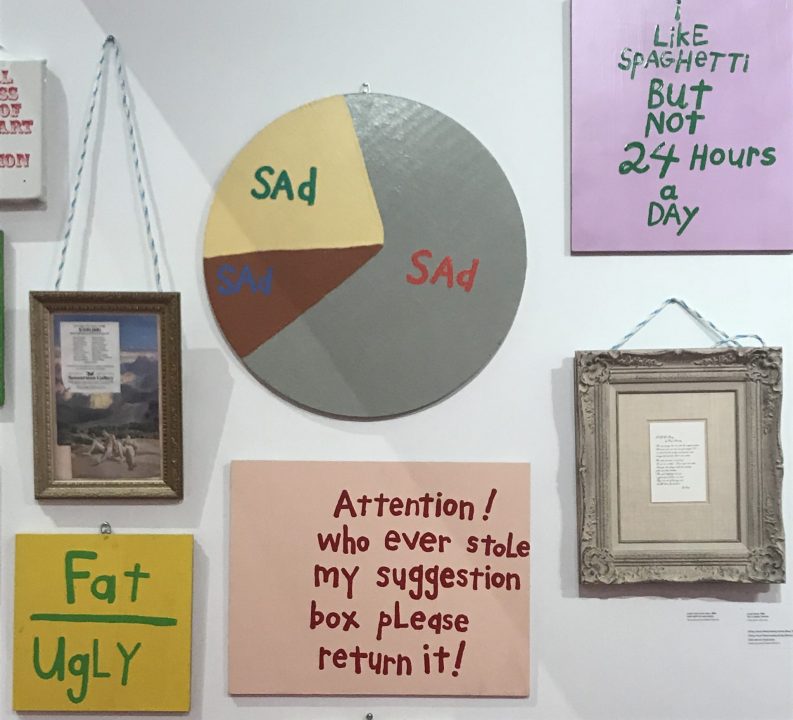The University of Pennsylvania is a classic Ivy League university known for its finance and other STEM-driven majors. However, what most do not know is that UPenn is also equipped with arts of all kinds. UPenn’s Institute of Contemporary Art hosted Cary Leibowitz’s collection of simplistic yet eye-catching paintings from February 2 to March 25.
It was quite odd that UPenn chose to present Leibowitz’s work, for it does not utilize a particularly scholarly voice. Leibowitz’s art is visual emotion; it is an investment of his most suppressed cognitions and an exaggeration of his most vivid imaginations, as art is intended to be. His featured work seems rather simplistic – some may even consider it to be amateur. This is because most of his paintings consist of only two components: a solid colored background and a phrase written in a goofy font.
Leibowitz’s use of color immediately attracts viewers. He uses bright bubblegum pinks, vibrant yellows and neon mint greens that prompt the viewers to travel to a transient world of whims and optimism. The room, entirely covered in Leibowitz’s paintings from floor to ceiling, was a wonderland and instantly uplifted the viewers’ moods.
The use of these colors strongly links Leibowitz’s art to pop art. His line work and bolded words are reminiscent of the renowned art movement. However, Leibowitz’s art is far less exuberant and minimalist compared to classic pop art. His work aims to present a direct thought but in a colorful way. There is something quite childish and juvenile about his paintings visually, but the words on them are heavy, raw and heart-sinking.
Phrases like “Loser line forms here,” “Hey! I’m not depressed anymore…shut-up” and “epiphany please” can be found plastered across his paintings. These phrases claw at the audience’s sympathies and sprout concerns. Yet, it is clear that the painter makes light of his own self-destructive thoughts and invites viewers to do the same, for his art is not meant to be saddening or worry-evoking — it is meant to be liberating.
A sense of freedom is created when voluntarily admitting, owning and presenting these horrible, intrusive thoughts. It is empowering to make beauty and art out of one’s own tragedies. This clear, jarring contrast between the optimistic colors and the pessimistic phrases, both contained within the same paintings, mimics the complete confusion consistent in adulthood. Leibowitz’s art shows how easy it is to look pretty and colorful while housing such unpleasant thoughts.
Humans naturally want to remain youthful. There is a purity and brightness associated with childhood, but life, with experience, finds a way to mature minds. Humans fight time by rejoicing in bright colors and simple geometries as Leibowitz did with his paintings, but life will always contain complexity and even incongruity. And so, all that is left to do is to make art out of this madness.

